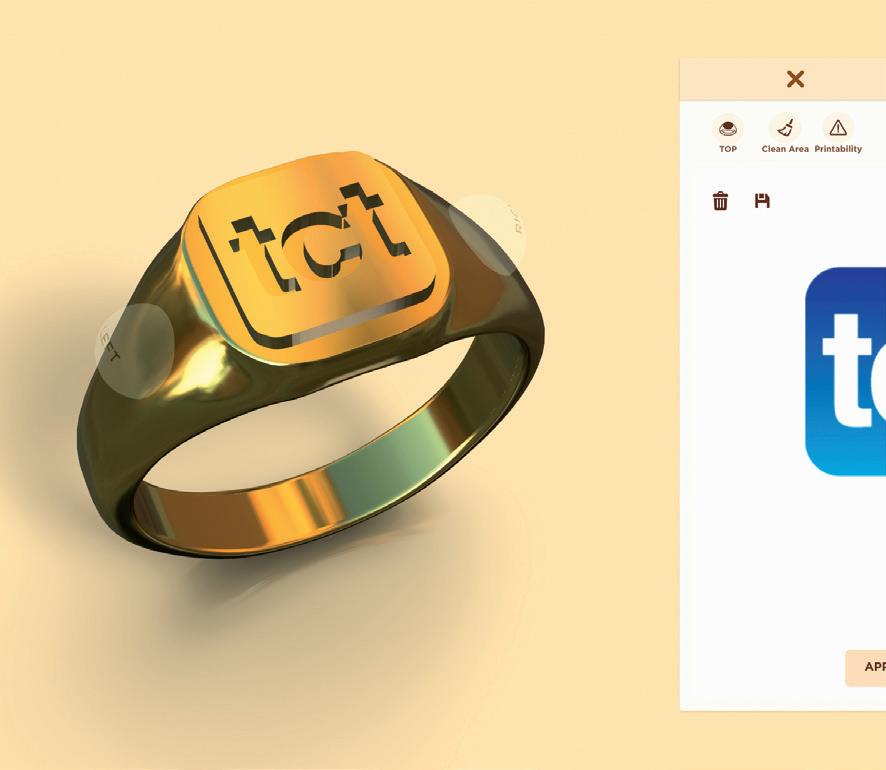STANDARDS
AM STANDARDS: 5 THINGS YOU NEED TO KNOW
Experts weigh in on the ‘must knows' for AM standards and certification. BUILDING CONFIDENCE Andrew Imrie, Principal Technical Consultant | LRQA “In the field of AM, a ‘desire for safety’ has not been a barrier to progress to date. This revolutionary manufacturing technique has been applied overwhelmingly in non-safety critical areas, with regulators – notably in medicine and aerospace – relatively quick to adapt. However, unless standardisation progresses, the projected growth of the market is likely to stall due to a lack of confidence where AM products are used in more safety critical applications. Whether driven by regulators, standards bodies or the industry itself, the emergence of an assurance culture in AM can only build confidence in the industry. “ISO 52920 is an AM standard which will become an important part of the tender process for procurement teams. Through ISO 52920, manufacturers will soon be able to ensure that their facilities are qualified, bringing confidence into the supply chain.” A STANDARDISED APPROACH Katharine Morgan, President | ASTM International “Certification for AM is vital for the technology to get broader acceptance across different industry sectors. AM opens up a plethora of applications ranging from toys to medical to aerospace and hence requires a higher degree of quality assurance. Therefore, the reproducibility of parts with quality, safety, and consistency needs to be demonstrated and verified to gain customer confidence. Standards provide the pathway to achieve certification of additively manufactured components, and ASTM is committed to developing globally recognised and industryrelevant standards on AM. Several AM standards have been published, and AM stakeholders can directly apply these standards to streamline their certification process, both internal and external, for AM. Following a standardised approach for AM can bring down the time-to-market and respond quickly to market demands.”
MATERIALS MATTER Zehavit Reisin, VP, Head of Materials Business & Design Segment | Stratasys “With AM certification, it is important to not only consider the material mechanical, thermal and chemical resistance properties to fit a specific use case, but also the certification of the production process of the material as well as the printed part. This is particularly relevant for highly regulated industries such as aerospace, mobility and medical. For example, the Stratasys’ ULTEM 9085 material is FST compliant for aircraft interior applications. However, to supply the aerospace sector, a certificate of conformance and other documentation was required to reflect that the production process was traceable and the FDM material manufactured in accordance with industry specifications. The very same ULTEM 9085 was found suitable for the mobility sector tooling applications but needed to go through different certification tests." TEST, AND TEST AGAIN Donald Godfrey, Global Director, Business Development for Aviation and Defense | SLM Solutions “When the EASA/FAA looks to qualify printed components, their focus is going to be on performance-based data. To validate this requirement, the company printing the component must produce a certain number of test specimens at least twice (usually more) in the same 3D printing machine, meaning the machine must produce metal components that not only match design intent but also be repeatable. Specimens from both builds must be processed after build and tested the exact same way both times to validate machine repeatability. Specimens must match (at the very least) the minimal material property requirements of the component design.
the part must also be qualified. The powder chemistry, morphology, and size distribution must be repeatable over builds. The heat treat process must be verified as repeatable. Finally, the material properties of the part must be tested and shown to be repeatable.” FLEXIBILITY IS THE FUTURE Arun Ramachandran, AM Lead/SME | Collins Aerospace “AM certification is primarily about demonstrating that the part design accounts for the various sources of variability intrinsic to the AM process, and the raw material. Designing for all the possible sources of variation is expensive and impractical. One of the approaches used in the industry is to develop either a frozen or a tightly controlled process to reduce variability and build an application specific test campaign around it. While this approach can help get a part certified, it could be challenging to apply it to certify other AM applications. It may also come into conflict with the desire to realise a key value proposition of AM – flexibility, in terms of machine choices, software/hardware upgrades, part design modifications, build parameter optimisation, raw material source changes etc. It is therefore important for the industry to also advance certification approaches that allow flexibility, and scale well in the long term.”
In addition to qualifying the machine, the supply chain process and
30.1 / www.tctmagazine.com / 027






